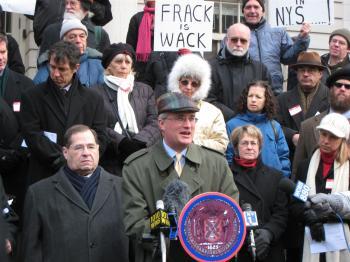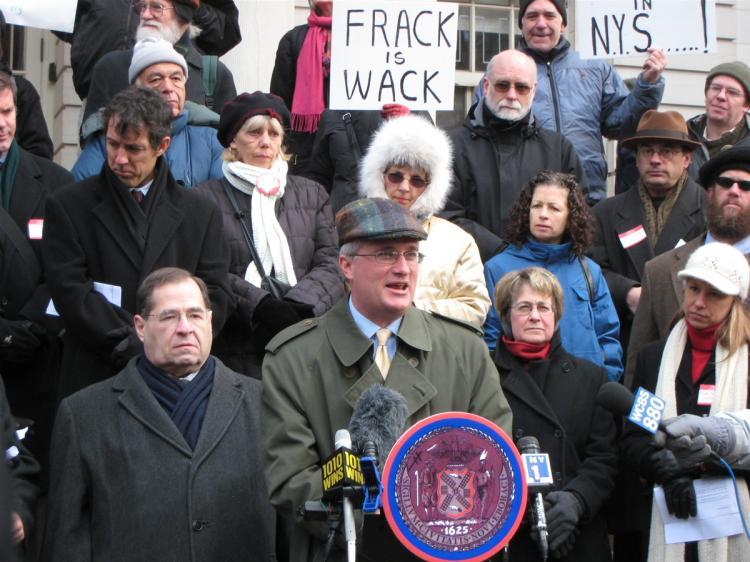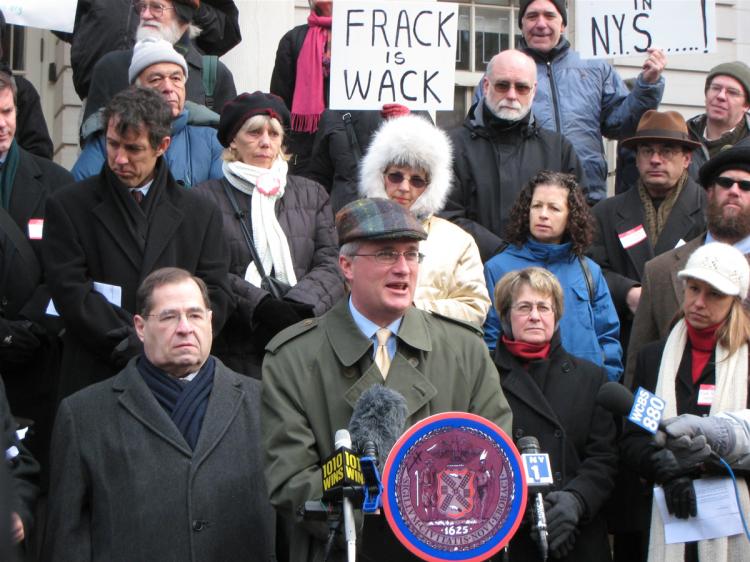NEW YORK—Proposed natural gas drilling in upstate New York could endanger the water that New Yorkers use everyday, according to elected official and environmental groups at City Hall on Monday.
The officials and groups are calling on Governor David Paterson to withdraw the draft Supplemental Generic Environmental Impact Statement (dSGEIS) on hydraulic fracturing and horizontal drilling for natural gas in the Marcellus and Utica Shale formations in upstate New York.
“We are all here to give one clear message: that we are not willing to accept the risks—the unknown risks that are posed to our watershed, not only for New York City, but throughout this state, by this kind of drilling,” said Assemblyman Brian Kavanagh.
The dSGEIS outlines potential impacts of hydraulic fracturing and horizontal drilling and proposes “issuance of permits to drill, deepen, plug back, or convert wells for horizontal drilling and high-volume hydraulic fracturing in the Marcellus Shale and other low-permeability natural gas reservoirs.”
Kate Sinding, senior attorney of the Natural Resources Defense Council, described the dSGEIS as “fatally flawed” and said it is unlikely to protect New Yorkers from the risks of hydraulic fracturing.
“What the industries are proposing to do is taking millions and millions of gallons of water out of our water sources throughout the state, add all kinds of toxic chemicals, pump them into the ground, and then extract the gas, and it’s unclear what then happens to the water,” said Kavanagh.
“We are not willing to allow that to happen until we know where the water is going to come from, what they are going to put into the water, and how they are going to clean it up after they are done before they leave our state. Without those things, we cannot be sure that we are not poisoning the water for generations to come.”
According to Tompkins County Legislator Martha Robertson, using natural gas may be cleaner than coal, but if the emissions needed to extract gas from shale are counted, using shale gas may increase emissions instead.
In a written statement, Assemblywoman Barbara Lifton said hydraulic fracturing has resulted in “serious accidents, spills and contamination that have virtually destroyed the homes and land of a number of New York families.” She concluded that hydraulic fracturing is not safe or well-regulated.
“Before we go rushing ahead with some illusion of economic gain, we need to look at what is critical to our environment [and] to our people,” said Assemblyman William Colton.





Friends Read Free